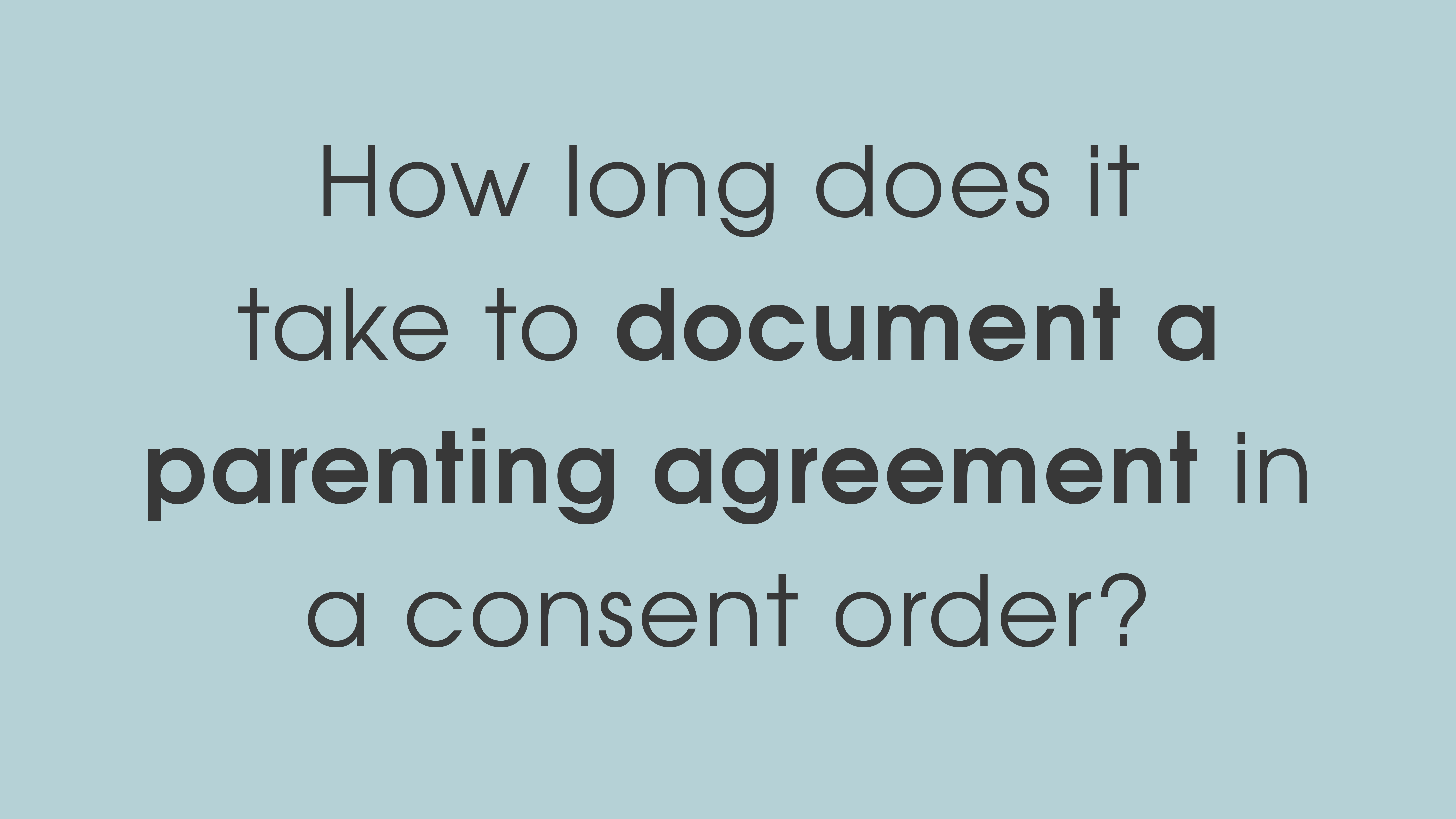Property Settlement Agreements: 5 tips to minimise your costs and save time when you have reached an amicable agreement

When you reach agreement about how your property will be distributed after separation it is essential to document the agreement in a formal way. From speaking with our clients we understand that their biggest concerns in formally documenting their property settlement are:
- They have reached an agreement and simply want to finalise the matter without fuss;
- They are worried that going to see a lawyer will delay and complicate their matter where they have already reached an agreement;
- They are concerned about the costs in preparing a detailed agreement when they are sure their matter is straight forward.
Firstly, why do you need a formal agreement anyway?
Without a formal agreement, that is, either a consent order made by the Family Court of Australia or a financial agreement entered into under the Family Law Act, there is no certainty that your matter is truly at an end.
We have seen far too often a scenario where the parties have written down their agreement on a piece of paper, gone to the effort of signing it in the presence of a Justice of the Peace, only for the agreement to be ignored when one party seeks a further distribution of property. A written agreement, signed in the presence of the Justice of the Peace or other witness, is not a binding document, unless it is a consent order or financial agreement.
You will also need a formal agreement if you are transferring property between spouses and want to avoid paying transfer duty on the transfer of property. Formally documenting your agreement by way of consent order or financial agreement allows you an exemption on transfer duty which is ordinarily payable on the transfer of property. For example, if you have agreed that one of you will retain a property that is owned jointly then without a financial agreement you will need to pay transfer duty on one half of the value of the property. With a financial agreement or consent order, no transfer duty is payable
How can you minimise costs and save time in finalising your agreement?
Here are our tips to help you streamline the process when you have reached an amicable agreement with your spouse.
- Prepare a detailed schedule of the property that you own either jointly or in individual names.
Preparing a detailed schedule of all property owned assists your lawyer in putting together the agreement. You must include all property. Here property includes assets, liabilities and superannuation. For example, your schedule might include real property, shares, investments, cars, bikes, boats, cash in the bank, a mortgage, line of credit, credit card, other personal loans, or superannuation. Your schedule will include property whether in joint names or individual names, regardless of whether you had the property before, during or after your relationship.
With regard to your furniture – unless you have antique items, grand pianos, artwork, or other furniture of significant value, it is not necessary to list out every single item of furniture that you own. You should be able to agree that your furniture has a certain value – it will not be the insured value. It will be the value you might get if you had to sell your furniture.
You contact us for our property schedule which will assist you in considering what property you have.
- Collate documents that confirm the values of the property included in your schedule.
In all property matters regardless of whether you are at the height of negotiations or have amicably reached a settlement, each party has an obligation to disclose all relevant documents which supports their property matter. When you have reached an agreement it is particularly important to disclose the following documents:
- Valuations you have obtained for any real property, or if you haven’t had the properties formally valued, a market appraisal which considers comparable sales;
- Current superannuation valuations;
- Investment portfolio summaries;
- Bank statements showing current balances for all accounts held;
- Valuations for any vehicles – you can obtain an estimate from redbook.com.au;
- Valuations of any business interests;
- Any other document which supports a value you have included on your property schedule.
- Write down the details of your agreement.
You should make specific notes about your agreement. These notes might include comments like – Sue will receive the Camp Hill property. Bill will receive the Noosa property. Sue will pay to Bill $100,000 being half of the difference in the equity of the two properties. Bill will keep his shares. Sue and Bill will each keep their own superannuation. Sue will collect the piano, dining table and spare tv from the Noosa property within 14 days. And so on.
Setting out your agreement in this way makes straightforward for your lawyer to then draft the agreement for you.
- Make some notes about the contributions you have each made to the relationship.
Whether you are entering into a financial agreement or preparing an application for consent orders, your lawyer needs to know about how it was that you acquired the property that you have. You need to think about:
- what property you had at the beginning of your relationship,
- whether you received any special contributions during the relationship – an inheritance from an estate, a personal injury claim and make notes about where the funds came from and what you did with them;
- any special arrangements which have been in place since separation;
- the income of each of you;
- if you have children – what the arrangements for your children were during the relationship and what they are now.
This information is important because it allows your lawyer to draft both the financial agreement or the application for consent orders, and particularly with regard to the financial agreement, provide you with advice as required by the Family Law Act.
- Remember that the lawyer who prepares your agreement can only act for one party.
Even though you have reached an agreement and you both have a common goal as to what you want to achieve, a lawyer can only act for one party. This is because the lawyers role is broader than simply preparing the agreement. Whether the lawyer is preparing a financial agreement or consent orders, they have obligations to provide you with advice and ensure that the agreement is drafted appropriately in accordance with your instructions. The rights and interests of one party may differ from the rights and interests of the other. In those circumstances to act for both parties would give rise to a conflict of interests.
Regardless of whether your property settlement is amicable, each party to an agreement is entitled to and should seek their own independent legal advice about the agreement.
You should determine between you which party will instruct a lawyer to prepare the agreement. That party should then attend with a lawyer armed with all of the information referred to above.
Two final points…
In reaching an agreement about your property settlement there are two final points which you need to be aware of and talk with your lawyer about. Firstly – entering into consent orders only does not finalise any spouse maintenance issues. What this means is that you can finalise your property settlement and thereafter up to 1 year after your divorce has become finalised or 2 years after you separate from your de facto relationship, a party can still bring an application for spouse maintenance.
Secondly – if you reach an agreement about sharing superannuation and seek an order that superannuation be split, then there are some extra steps which involve seeking the consent of the trustee of your superannuation fund, before you sign any orders, which make add to the timeframe in finalising your matter. If these matters are relevant to you, you should speak further with your lawyer.
More information?
If you need any further information regarding documenting your agreement following separation, please contact us.





